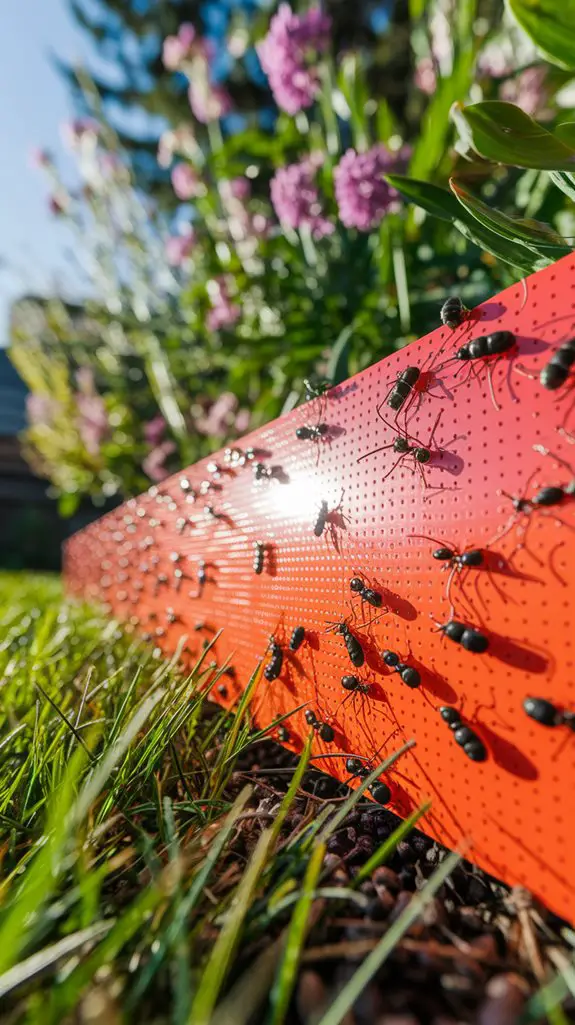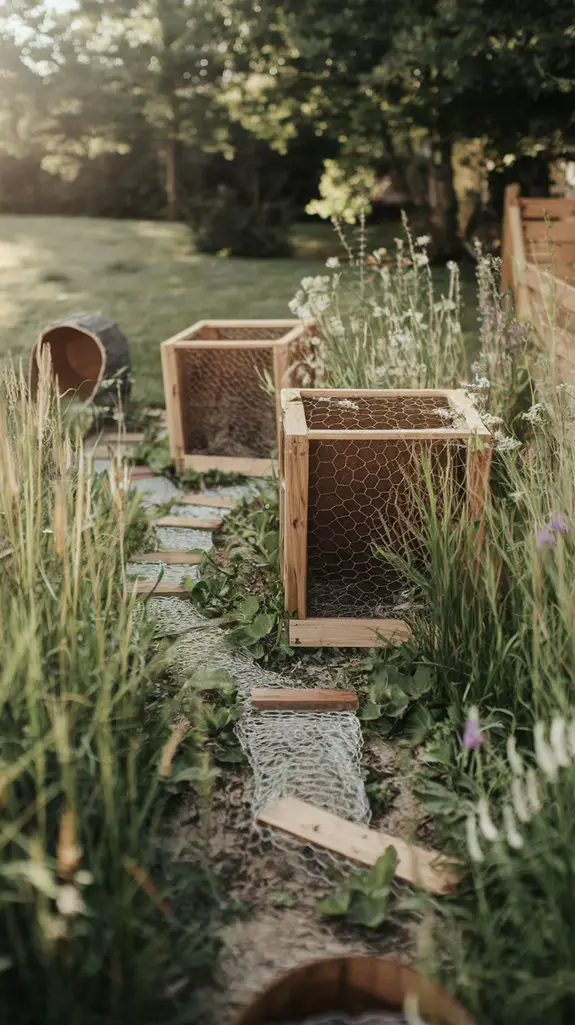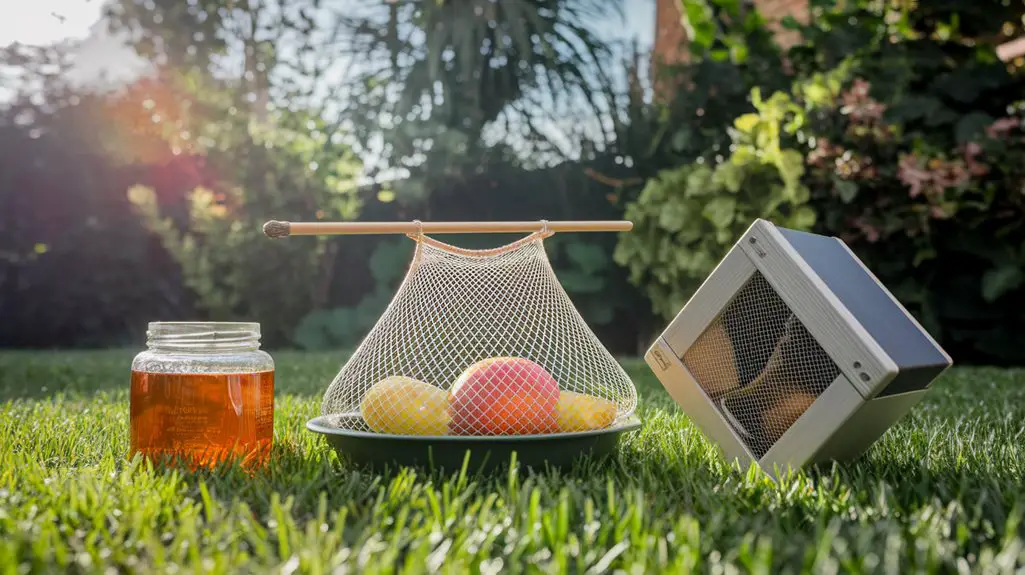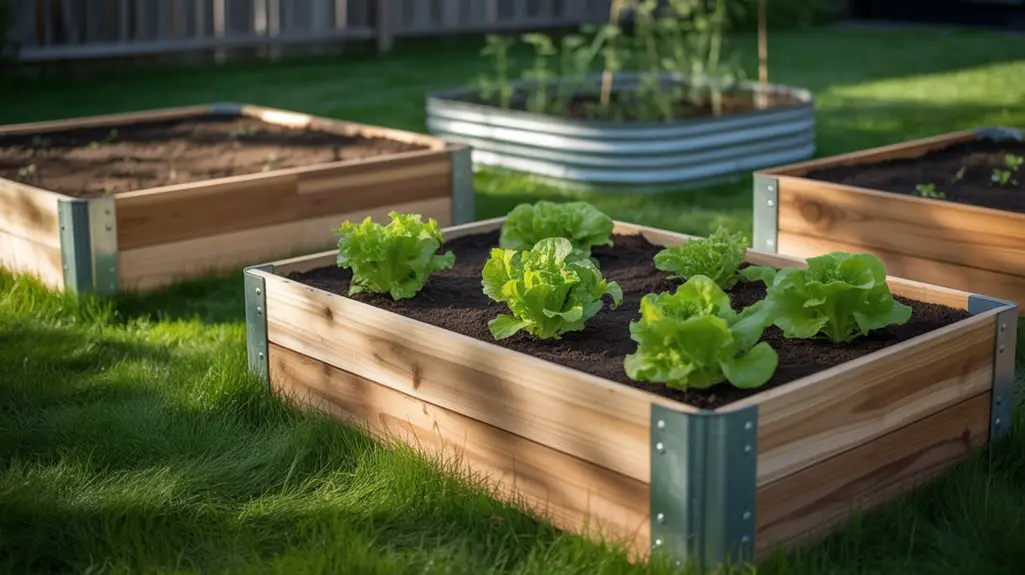Every year, backyard pests destroy approximately 40% of homegrown vegetables and fruits in American gardens. You don’t need expensive chemicals or professional services to manage these invasive critters effectively. With simple household materials, you can create targeted traps that protect your garden while maintaining ecological balance. These DIY solutions not only save money but also reduce your environmental footprint. Ready to discover which homemade traps will best defend your outdoor sanctuary?
Bottle Traps for Fruit Flies and Wasps
Bottle traps offer a simple, cost-effective solution for managing fruit flies and wasps in your backyard.
To create one, cut the top third off a plastic bottle and invert it into the bottom portion, creating a funnel effect that allows pests to enter but not escape.
For fruit flies, fill the bottom with apple cider vinegar and a drop of dish soap. The vinegar attracts them while the soap breaks surface tension, causing them to drown.
For wasps, use sweet juice or soda instead.
Place traps in strategic locations—near fruit trees, compost bins, or outdoor dining areas.
Replace the bait every 5-7 days for maximum effectiveness. This eco-friendly approach reduces chemical use while effectively controlling pest populations.
Sticky Board Barriers for Crawling Insects

While bottle traps work well for flying pests, sticky board barriers provide an effective defense against crawling insects that threaten your garden. Create these barriers using cardboard coated with a non-toxic adhesive like petroleum jelly or specialized eco-friendly sticky substances.
Position your boards strategically around vulnerable plants or along common insect pathways. Replace them when they’re covered with captured pests or lose stickiness.
| Pest Type | Barrier Placement | Effectiveness |
|---|---|---|
| Ants | Ring around plant stems | High |
| Slugs | Perimeter of garden beds | Medium |
| Beetles | Base of affected plants | Very high |
You’ll find these sticky barriers particularly useful for protecting young seedlings without harmful chemicals. For best results, elevate the boards slightly to prevent soil contamination and check them regularly to guarantee they remain effective against your specific pest challenges. Additionally, using natural pest control methods like these can contribute to a healthier garden ecosystem.
Homemade Live Catch Traps for Rodents and Rabbits

For larger garden intruders like mice, rats, and rabbits, humane live catch traps offer a non-lethal solution that respects wildlife while protecting your crops.
You’ll need a medium-sized plastic container, thin wood for a ramp, and bait appropriate for your target pest.
Create a tipping trap by balancing the container on a fulcrum with bait at the far end. When the animal ventures in for food, their weight tilts the container, causing them to slide inside.
Alternatively, fashion a one-way door trap using a five-gallon bucket with a hinged lid that swings inward only.
Check your traps every few hours to prevent unnecessary stress to captured animals.
Release them at least three miles from your property in suitable habitat with water sources.
Conclusion
With these three DIY traps in your arsenal, you’re well-equipped to handle backyard pests without harsh chemicals. Like a peaceful guardian of your garden’s ecosystem, you’ll keep fruit flies, wasps, crawling insects, and larger critters in check while maintaining environmental balance. Remember, effective pest management doesn’t require expensive solutions—just creativity, patience, and these simple, sustainable approaches to protect your outdoor sanctuary.




